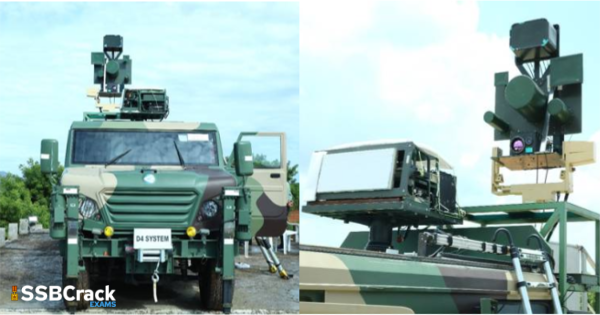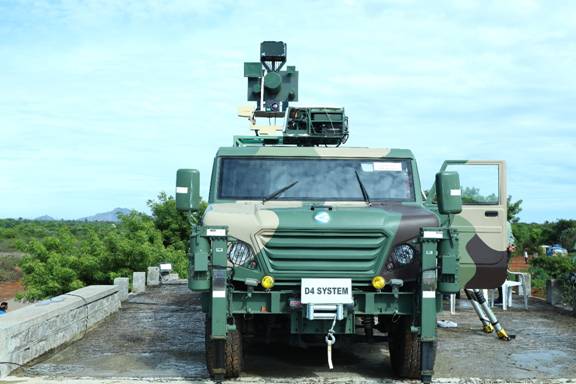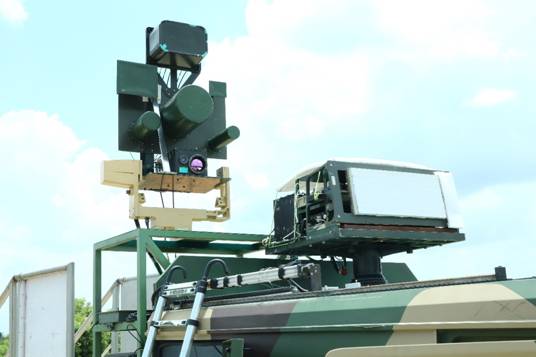Indian Navy has signed a contract with Navratna Defence PSU Bharat Limited (BEL) for the supply of the first indigenous comprehensive Naval Anti Drone System (NADS) with both hard-kill and soft kill capabilities in New Delhi on August 31, 2021.
The contract was signed in the presence of senior Naval officers and DRDO representatives. Indian Navy has provided consistent support and has led in the joint development of the anti-drone system with the Defence Research and Development Organisation (DRDO) and BEL.
The NADS, developed by DRDO and manufactured by BEL, is the first indigenously developed anti-drone system to be inducted into the Indian Armed Forces. Multiple Units of BEL, namely Bengaluru, Hyderabad, Pune and Machilipatanam; and DRDO Labs, namely Electronics & Radar Development Establishment (LRDE), Bangaluru; Defence Electronics Research Laboratory (DLRL) and Centre for High Energy Systems and Sciences (CHESS), Hyderabad and Instruments Research & Development Establishment (IRDE)Dehradun; in close collaboration with the Indian Navy, were involved in the making of this fully indigenous system, as part of the Atmanirbar Bharat initiative to counter drone threats of adversaries.
The NADS can instantly detect and jam micro drones and use a laser-based kill mechanism to terminate targets. It will be an effective all-encompassing counter to the increased drone threat to strategic naval installations.
The anti-drone system was first deployed to provide security cover for the Republic Day Parade this year and later during the Prime Minister’s Independence Day Address to the Nation from the ramparts of the Red Fort. The system, which offers 360-degree coverage, was also deployed in Ahmedabad for the Modi-Trump roadshow.
The NADS uses the help of Radar, Electro-optical/infrared (EO/IR) sensors and Radio Frequency (RF) detectors to detect and jam the micro drones. The DRDO’s RF/Global Navigation Satellite System (GNSS) detects the frequency which is being used by the controller and the signals are then jammed. The anti-drone technology system of DRDO provides both ‘soft kill’ and ‘hard kill’ options to the Indian Armed Forces to tackle fast-emerging aerial threats. Both the static and mobile versions of NADS will be supplied to the Indian Navy within a short time from the signing of the contract.
Senior civil and military officials of the Ministry of Defence and BEL were present on the occasion. The BEL is to sign similar contracts with Army and Air Force also.
ALSO READ:
- Historic Moment For India: Indigenous Aircraft Carrier ‘IAC Vikrant’ Completes Successful Maiden Sea Voyage
- India’s First Indigenous Aircraft Carrier INS Vikrant Finally Begins Sea Trials
- Meet Lt Col Prasad Bansod Who Made India’s First Indigenous 9 Mm Machine Pistol “ASMI”
- One Lakh Indigenous Bulletproof Jackets Supplied To Indian Army Soldiers
- Induction Of Indigenous Bridging System Into The Indian Army
- 6 Indigenous Rifles/Guns Used By Indian Army
- Top 10 Indian Indigenous Defence Weapons
- 30 Key Features Of Drone Rules 2021
The NADS, developed by DRDO and manufactured by BEL, is the first indigenously developed anti-drone system to be inducted into the Indian Armed Forces.
— SSBCrackExams (@SSBCrackExams) September 3, 2021
Naval Anti Drone System (NADS) is a multi-role performing drone system for both hard-kill and soft kill capabilities. pic.twitter.com/ScndzeY2KH





















